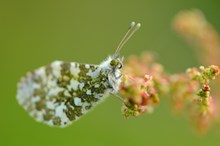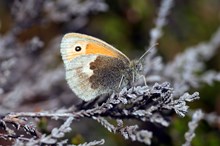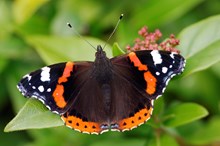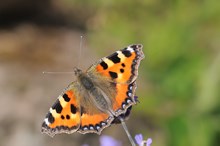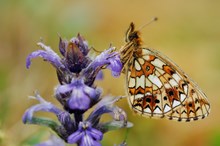09 October, 2020
Butterflies on the increase
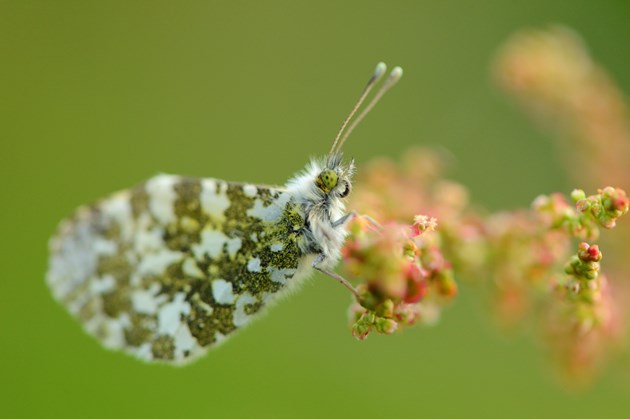
Butterfly populations have increased in Scotland, likely as a consequence of warmer summers.
The latest Scottish Biodiversity Indicator published by NatureScot examines the long-term trend for butterflies since 1979.
While the trend shows a moderate increase overall, the picture is complex, with species faring differently.
Some butterfly populations in the UK continue to shift northwards as a response to climate change.
Those expanding their range northwards into southern Scotland include small skipper, Essex skipper and, most recently, white-letter hairstreak.
Ringlet, peacock, and orange-tip show significant long-term population increases, while the small heath is also on the up.
Meanwhile speckled woods have expanded their range from their strongholds in Highland and south-east Scotland into new areas.
Regular migrant butterflies such as the red admiral are also increasing over the long-term as a response to warming.
Species in long-term decline include the small tortoiseshell, which may be due to poorer overwinter survival in warmer and wetter winters.
Grayling have also declined but the small pearl-bordered fritillary and pearl-bordered fritillary have increased significantly. These two species may be benefitting from native woodland planting and targeted management at specific sites.
Simon Foster, NatureScot Trends and Indicators Analyst, said: “We know that habitat loss, climate change and urban development are among the key factors that are affecting butterfly populations.
“We’re working with partners across Scotland on a range of projects to help our butterflies and other pollinators thrive, from habitat creation and management to promoting wildlife friendly gardening and best practice guidance for developers.
“Butterflies can also benefit greatly from more people getting involved in citizen science. If you would like to help why not join the Butterfly Monitoring Scheme and get involved with surveys? It’s easy, fun and can help us improve our knowledge of what is happening where, giving us the best chance of targeting conservation measures most effectively.”
To find out more contact Butterfly Conservation Scotland: info@butterfly-conservation.org.
ENDS
Contact information
- Name
- NatureScot Media
- Telephone
- 0131 316 2655
- media@nature.scot
Notes to editors
Read the full Scottish Biodiversity Indicator - Butterflies.
The recently published Big Butterfly Count reported a large decline in counts. This is a snapshot survey which can be influenced greatly by weather and timing of peak flight periods. The trends assessed in the indicator help us to understand the changes over a longer term, smoothing out the large annual fluctuations.
The indicator is a multi-species index compiled by Butterfly Conservation and the Centre for Ecology & Hydrology, using data primarily from the UK Butterfly Monitoring Scheme (UKBMS).
Through the Pollinator Strategy for Scotland, NatureScot is taking action to create and improve habitat for pollinators, provide courses to help volunteers identify and record species, encourage developers to include habitats for pollinators in their projects, provide guidance and advice for land managers and support robust and improved monitoring and surveying.
NatureScot is also raising awareness of the importance of pollinators more widely, through steps such as promoting wildlife friendly gardening, supporting community action through initiatives such as the Keep Scotland Beautiful pollinator-friendly award and managing our own National Nature Reserves to create pollinator-friendly habitats.
NatureScot is Scotland's nature agency. We work to enhance our natural environment in Scotland and inspire everyone to care more about it. Our priority is a nature-rich future for Scotland and an effective response to the climate emergency. For more information, visit our website at www.nature.scot or follow us on X at https://x.com/NatureScot
’S e NatureScot buidheann nàdair na h-Alba. Bidh sinn a’ neartachadh àrainneachd na h-Alba agus a’ brosnachadh dhaoine gu barrachd suim a chur ann an nàdar. Tha e mar phrìomhachas againn gum bi nàdar na h-Alba beairteach agus gun dèilig sinn gu h-èifeachdach le èiginn na gnàth-shìde. Tha an tuilleadh fiosrachaidh aig www.nature.scot no air X aig https://x.com/NatureScot

